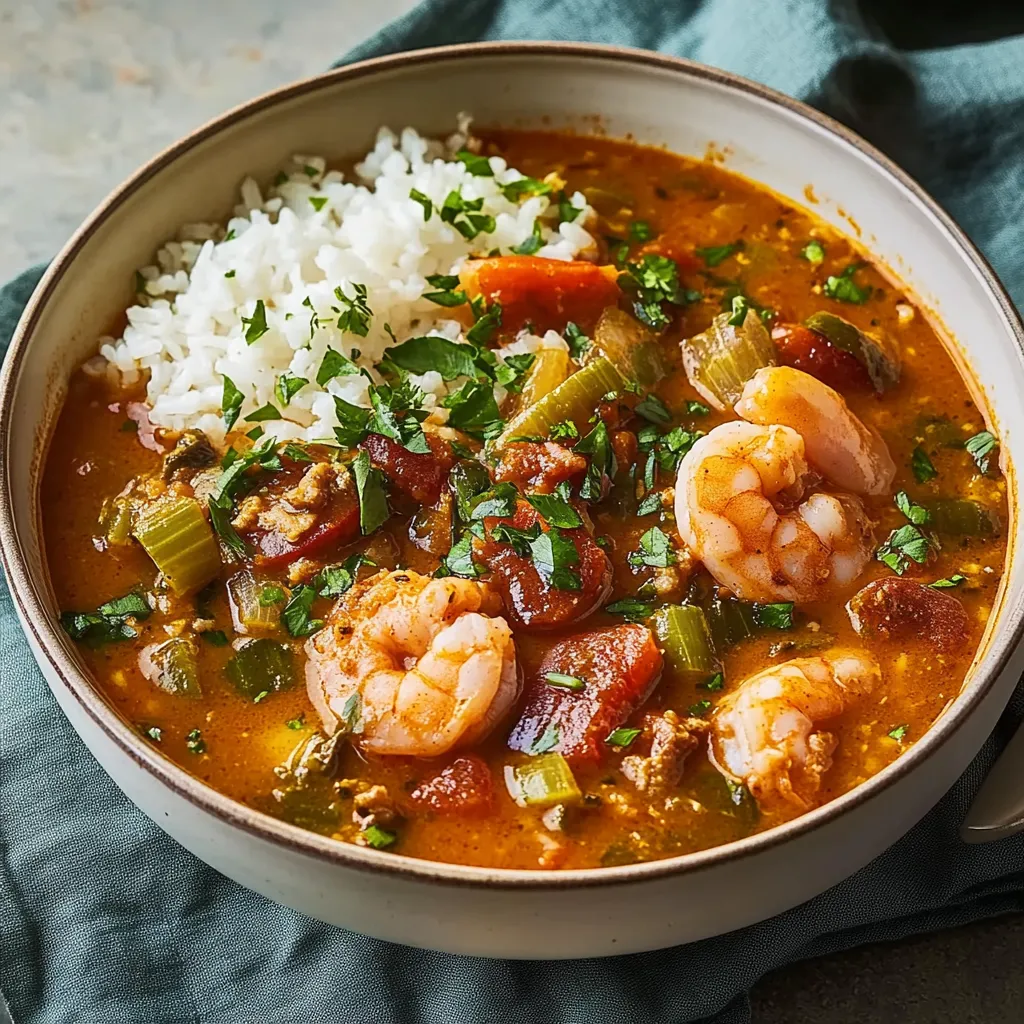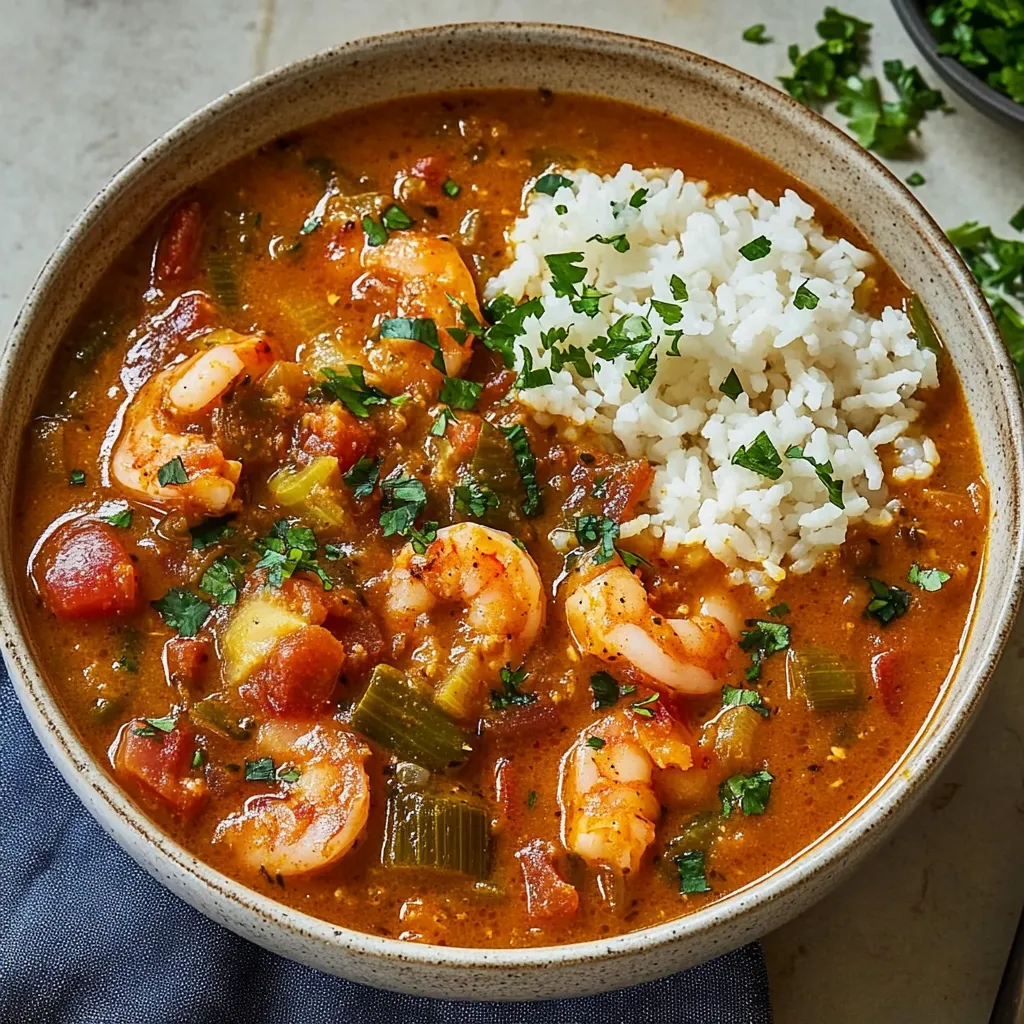 Pin it
Pin it
Down in New Orleans, gumbo isn't just food - it's a journey told through rich flavors that speak of family roots and Louisiana culture. This Creole dish, handed down across families and fine-tuned during countless weekend gatherings, begins with that crucial dark roux that sets the stage for everything else. From the deep brown base to the softened veggie mix and the beautiful blend of seafood with sausage, you'll find a meal that's both fancy and down-home comforting.
I first learned about this gumbo in my grandma's kitchen, where she always told me that being patient with the roux matters most. These days, I can still hear her saying 'don't stop stirring, honey' whenever I'm cooking at home.
Critical Ingredient Breakdown
- Bacon Drippings and Flour: Your roux base needs to be spot-on - grab plain white flour and clear, filtered bacon fat. Make sure the drippings come from good bacon with all bits strained out
- Andouille Sausage: Try to find the real deal - it should feel firm, smell smoky, and have natural casing. This sausage spreads its flavor throughout the whole dish
- Base Vegetables: Get really fresh celery, onion, and bell pepper. Look for peppers with thick walls and celery that breaks with a snap
Step-by-Step Cooking Guide
- Creating Your Perfect Roux:
- Warm a thick-bottomed pot on medium-low. Pour in bacon fat and let it fully heat up. Slowly add flour while stirring with a whisk. Keep moving in figure-eights without stopping. Watch as it changes from cream to light brown. Keep going until it's dark chocolate colored (about 25-30 minutes). Don't ever stop whisking or you'll ruin it. Take off heat once it's dark enough.
- Preparing the Veggie Base:
- Chop vegetables into small, even bits. Don't turn them into mush - aim for tiny chunks. Slowly mix veggies into the hot roux. Keep stirring so nothing sticks. Wait for them to soften up. Let their sweetness come out naturally. Throw in garlic near the end. Cook until you can see through the onions. Add just a tiny bit of salt.
- Creating the Main Mixture:
- Mix water and bouillon in another pot. Heat until it just starts bubbling. Add your roux mix one spoon at a time. Mix thoroughly between spoonfuls. Keep it barely simmering. Slowly add your seasonings. Give the bay leaves and thyme time to release flavor. Adjust heat and spices to your liking. Let it simmer for a full hour, stirring now and then.
- Handling the Okra:
- Heat some bacon fat until it's hot. Put okra in without overcrowding. Add vinegar right away. Cook until it's not slimy anymore. Stir occasionally until the edges turn brown. Add to your gumbo using a slotted spoon. This keeps the final dish from being slimy.
 Pin it
Pin it
My grandma always said making gumbo is like meditating - you can't hurry or walk away from it. The way she treated each ingredient taught me cooking isn't just following directions, it's showing care through what you make.
Perfect Seafood Timing Tricks
If you add seafood too soon, it gets tough and chewy. I've figured out that crabmeat should go in first, then shrimp just minutes before serving, so everything stays tender and just right.
 Pin it
Pin it
In my family, this gumbo has grown beyond just food - it's become our way of coming together. The smell that fills the house, bringing everyone to the kitchen to look and taste, makes moments we all treasure. Whenever I cook it now, I feel linked to all those New Orleans cooks before me who stirred their pots with the same care and passion.
Frequently Asked Questions
- → How do I avoid burning the roux?
- You've got to keep whisking non-stop—around 20-30 minutes on medium-low heat—until it turns dark brown. Don’t walk away, or it’ll burn!
- → Can I skip adding filé powder?
- You can leave it out if needed. Okra will offer some thickness, but you'll notice a slightly different taste without the filé.
- → How long does gumbo stay fresh?
- It keeps fine in the fridge for about 3-4 days, and you can freeze it for up to 6 months. Many say it gets better the following day!
- → Can I use other kinds of seafood?
- Absolutely! Feel free to use whatever's fresh. Crawfish, oysters, or a firm white fish can replace or add to the shrimp and crab.
- → Why add filé powder twice?
- Adding it twice helps balance the flavor while also giving the gumbo a nice thickness. Just don’t boil it after that final addition.
